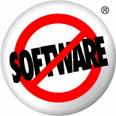Web 2.0 focuses on services rather than software.

 Unlike the types of technologies that were introduced in the 1990's, application services don't require the end user to load software onto their computer.
Unlike the types of technologies that were introduced in the 1990's, application services don't require the end user to load software onto their computer.
 Services reside on the web.
Services reside on the web.
 When the end user wants to participate or use a service they go to a web site.
When the end user wants to participate or use a service they go to a web site.
 Many web services were not available 5 to 10 years ago. Applications like online driving directions and MLS listings are examples of consumer application services.
Many web services were not available 5 to 10 years ago. Applications like online driving directions and MLS listings are examples of consumer application services.
 Remember when you needed to look up driving direction from a map?
Remember when you needed to look up driving direction from a map?
 Or, when you wanted to buy a new house, you had to get listings from your real estate agent who found all the homes in your area, and then you had to drive past each home?
Or, when you wanted to buy a new house, you had to get listings from your real estate agent who found all the homes in your area, and then you had to drive past each home?

 Business are also accessing applications over the web
Business are also accessing applications over the web
 Applications services for businesses are called SOA (software as a service), or a hosted solution
Applications services for businesses are called SOA (software as a service), or a hosted solution
 Application services are run on computers located in a cloud. This means that the software is run on computers located in data centers someplace in the world. That the people accessing the applications over the Internet do not know where their applications reside.
Application services are run on computers located in a cloud. This means that the software is run on computers located in data centers someplace in the world. That the people accessing the applications over the Internet do not know where their applications reside.
 The benefit for companies is that their IT people do not need to buy hardware, manage, or run these applications.
The benefit for companies is that their IT people do not need to buy hardware, manage, or run these applications.
 The downside is that the company no longer controls the application or the data on their computers.
The downside is that the company no longer controls the application or the data on their computers.
 Companies like SalesForce.com were early providers of Internet accessible applications. They provide an online service for sales people to manage their prospects and customers called CRM (Customer Relationship Management).
Companies like SalesForce.com were early providers of Internet accessible applications. They provide an online service for sales people to manage their prospects and customers called CRM (Customer Relationship Management).


